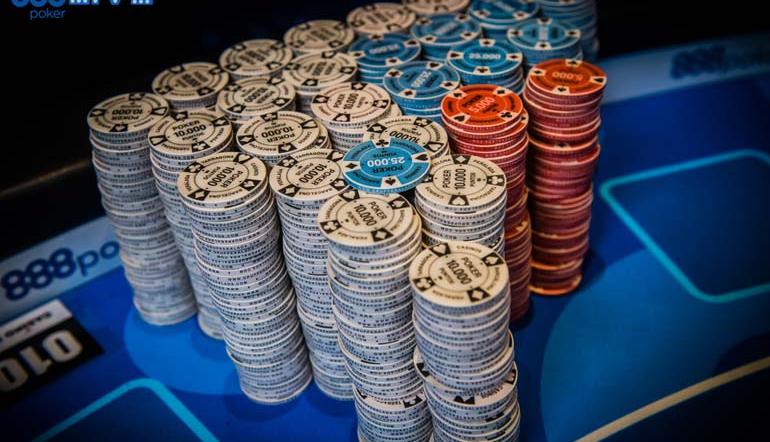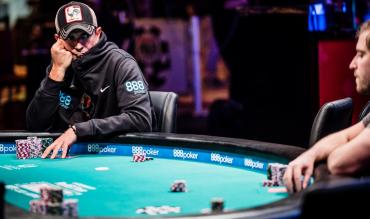The term “standard deviation” appears from time to time in poker discussions. It often gets thrown around without any understanding of what the terminology means or whether it carries actual relevance.
To help shed some light on the issue, we’ll discuss the following -
1. What standard deviation is.
2. How to calculate our standard deviation.
3. Understanding the maths behind standard deviation.
4. Seeing the relevance of standard deviation.
What is Standard Deviation in Poker?
Quick Answer – Standard deviation in poker is a value expressed in bb/100 (i.e. a winrate) that helps us understand how “swingy” our poker game is. Understanding how the value is calculated is not imperative; we can use poker tracking software to calculate the vale for us. A typical value for standard deviation is usually around 80bb/100.That’s all most of us need to know.
Now let’s strive for a more technical understanding.
Standard deviation helps us to comprehend how spread out a set of data is.
A data set with a high standard deviation would imply that many values within that data set deviate significantly from the average value. A low standard deviation, on the other hand, would make it more likely that values within that data set are close to the average value.
So what does that have to do with poker?
It’s common to take the standard deviation of our winrate over a period of time. We split our poker career up into chunks (perhaps 100 hands each) and take the winrate for each. We then use each of those winrates as a data point for calculating our standard deviation.
How to Figure Out Our Standard Deviation
It’s technically possible to calculate our standard deviation by hand, but it’s not practical, in most cases. The reason for this is simple. If we have a database of 50,000 hands, that means we are working with 500 different data points.
Realistically, we’d need some type of script assistance. Besides, we’d also need to know our winrate over every 100-hand sample. There is no easy way to do that without the help of tracking software.
The recommended option is to let our poker tracking software calculate the value for us.
But, hold on….why would we even want to do that?
It’s certainly possible that some players may find their standard deviation value interesting for academic reasons. However, there is usually a specific reason why players are searching for their standard deviation.
1. It is used in variance simulators.
2. It is used in risk of ruin calculators.
Just a quick word of warning: Certain sources are a little slack on their use of terminology. Standard deviation can be represented in both big blinds and big bets. Big blinds should be represented with a lower case “bb” while big bets should be represented with an uppercase “BB”. (A big bet is twice the size of a big blind).
Sometimes we might need to look carefully at the context to determine if the correct designation has been used. For example, if a player is talking about their 40bb/100 standard deviation, there is a good chance they might mean 40BB/100 since a typical standard deviation is 80bb/100 (40BB/100).
Standard Deviation Maths
Now let’s see on a more technical level how standard deviation is calculated. We’ll take a simple data set as an example.
Let’s imagine we played 5 poker sessions of 100 hands each.
Session 1 – Positive 5bb
Session 2 – Negative 80bb
Session 3 – Negative 70bb
Session 4 – Positive 80bb
Session 5 – Positive 100bb
Just as a quick side note, we’d rarely, if ever, work with such a small data set. We are doing this purely for illustrative purposes.
We can first calculate the mean or average of this data set by adding all numbers together and dividing by the number of data points in the set (i.e. 5).
Adding the sets together gives a total of 35bb. Dividing by 5 gives us an average winrate of 7bb/100 hands. (Confused? Imagine every session had exactly 10bb/100 hands winrate. (10*5) / 5 = 10bb/100).
The next step is to calculate how far each of our values deviate from the mean of 7bb.
Session 1 – Negative 2bb
Session 2 – Negative 87bb
Session 3 – Negative 77bb
Session 4 – Positive 73bb
Session 5 – Positive 93bb
We then square these values (multiply them by themselves) and calculate the mean of the squared dataset.
Session 1 – 4bb
Session 2 – 7569bb
Session 3 – 5929bb
Session 4 – 5329
Session 5 – 8649
Total = 27,480bb.
Now we divide by 5 to get the mean.
27,480 / 5 = 5496bb
This value is known as our variance. Standard deviation is the square root of variance.
Sqr(5496) = 74.135bb/100
That number represents our standard deviation - the value that we get given by the tracker. Ok, so we deliberately chose numbers that got us close to an average ballpark value for standard deviation in poker.
With a data set of five, it’s straightforward for us to be wildly off in practice, which is why we use a much larger sample than 500 hands.
The Relevance of Standard Deviation

So, what exactly does our standard deviation tell us?
In short, it describes the “swingy-ness” of our strategy. Loose-aggressive players tend to generate a higher standard deviation than tight-passive players.
In the long run, standard deviation doesn’t matter too much. All results will eventually conform to our actual win rate – it just takes a large enough sample.
In the short term, however, higher standard deviations mean we are likely to deviate further from our expected winrate, (i.e. bigger upswings and downswings compared to a player with a low standard deviation).
In statistics, there is a rule known as the 68–95–99.7. It helps us understand how likely any given data point is to fall within boundaries, determined by our standard deviation.
The 68-95-99.7 Rule
Within 1 standard deviation – 68% likelihood
Within 2 standard deviations – 95% likelihood
Within 3 standard deviations – 99.7% likelihood
To put this into context with our earlier maths, we said that one standard deviation equates
to roughly 75bb/100 hands. Our expected value for each data point (i.e. each 100 hands sample) is a winrate of 7bb per 100 hands.
There is a 68% likelihood that our winrate for the session will be lower than 82bb/100 but higher than -68bb/100 hands. (i.e. 75bb/100 different from 7bb/100)
There is a 95% likelihood that our winrate for the session will be lower than 157bb/100 but higher than -143bb/100 hands. (So, two standard deviations from expected would be 75bb * 2 (150bb) different from 7bb/100).
There is only a 0.3% likelihood that data will fall outside of 3 standard deviations from expected. Of course, this doesn’t mean impossible; this kind of thing will still happen from time to time.
Want to learn more about variance in poker?
Check out the following recommended reading, related to the topic of standard deviation and variance in poker.
Understanding Variance will Help to Cope with Downswings
The Luck vs Skill Debate
5 Misconceptions Regarding Bankroll Management


